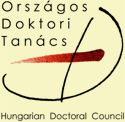 |
|
| Thesis topic proposal |
| |
Description of the research topic:
Free radicals are important and key constituents of many live processes. When, however, cells lose control over their concentration, they become very damaging to cellular constituents. Oxidative stress is a common damaging process in harming and even killing cells via free radical reactions. Oxidative stress in neurodegenerative diseases occurs when the cellular antioxidant defense system can’t control the levels of reactive oxygen species (ROS). Unsaturated fatty acids abundant in neuronal membranes are highly prone to lipid peroxidation with severe damage consequences. Hence, a key objective is to prevent lipid peroxidation in affected membranes. Flavonols are therapeutically interesting compounds due to the multitude of their actions in all kinds of cells and tissues. However, their antioxidant effects mechanisms were not yet fully elucidated, and their applicability was rendered to be limited by their poor water solubility and chemical instability. The antioxidant efficiency of flavonols was shown to depend on chemical and structural characteristics of surrounding environments. The overall aim of the present project is to measure membrane-flavonol interactions under normal and oxidative stress conditions and to investigate how the structural properties of flavonols correlate with induced structural changes within membranes made of unsaturated PC/cholesterol mixtures. Our working hypothesis is that during lipid peroxidation, the flavonol location in the membrane determines the degree of their protection towards membrane chemical degradation. We will test this basic hypothesis with electron paramagnetic resonance (EPR) spectroscopy, in collaboration with a Croation partner Institute (Dr. Suzana Šegota and Dr. Maltar Strmecki, Ruđer Bošković Institute, Zagreb). By using structurally and chemically different flavonols, we expect to determine the decreased formation of free radicals in induced lipid peroxidation and to determine optimal flavonol/lipid/cholesterol weight ratios that results in the highest possible membrane protection. Knowledge obtained within project could be extended to the design of effective drug delivery systems for incorporation and protection of other unstable bioactive molecules with an aim to improve human health or to increase the shelf life of pharmaceutical or food products. The expected results will pave the way towards development of novel and improved therapies for oxidative stress-associated disorders. The work programme is as follows:
• Preparation and characterization of model membranes. The key goal of this activity is to prepare and characterize model membranes of different unsaturated lipids and cholesterol content for the selection of the composition which well exposes the oxidative effects. We will start with most the promising unsaturated lipids and/or cholestrol/lipid ratio based on literature data [Sadžak at al., 2014].
• Electron paramagnetic resonance spectroscopy will be used both to detect free radicals using spin-trapping compounds and to measure changes in membrane dynamics using spin-labeled lipid molecules, with and without flavonols and before and after oxidative stress.
• The composition of the model membranes will be changed in different samples as concern the type of unsaturated lipid and lipid/cholesterol ratio. After this step we will quantitate the protective effect of different flavonols and deduce the mechanism of flavonol protection of lipid membranes.
Selected references
Emerit, J., & Michelson, A. M. (1982). Sem Hop, 58(45), 2670-2675.
Freeman, B. A., & Crapo, J. D. (1982). Lab Invest, 47(5), 412-426.
Emerit, J., Fechner, J., Galli, A., Clavel, J. P., & Congy, F. (1986). Presse Med, 15(16), 751-754.
Emerit, J., Klein, J. M., Coutellier, A., & Congy, F. (1991). Pathol Biol (Paris), 39(4), 316-327.
Tosaki, A., Bagchi, D., Pali, T., Cordis, G.A., Das, D.K. (1993) Biochemical Pharmacology 45(4), 961-969.
Beltran, B., Orsi, A., Clementi, E., & Moncada, S. (2000). British Journal of Pharmacology, 129, 953-960.
Munne-Bosch, S., & Alegre, L. (2002). Planta, 214, 608-615.
Moldovan, L., & Moldovan, N. I. (2004). Histochem Cell Biol, 122(4), 395-412.
Aruoma, O. I., Grootveld, M., & Bahorun, T. (2006). Biofactors, 27(1-4), 1-3.
Vauzour, D., Vafeiadou, K., Rodriguez-Mateos, A., Rendeiro, C., & Spencer, J. P. (2008). Genes & nutrition, 3(3-4), 115–126.
Kelsey, N. A.; Wilkins, H. M.; Linseman, D. I. A. Molecules 15 (2010) 7779-7814.
Federico, A.; Cardaioli, E.; Da Pozzo, P.; Formichi, P.; Gallus, G. N. E. Radi, J. Neurol. Sci. 322 (2012) 2542-2562.
Lingvay, M., Akhtar, P., Sebok–Nagy, K., Pali, T. and Lambrev, P.H. (2020) Frontiers in Plant Science 11, Article 849.
Sadžak, A.; Mravljak, J.; Maltar- Strmečki, N.; Arsov, Z.; Baranović, G.; Erceg, I.; Kriechbaum, M.; Strasser, V.; Přibyl, J.; Šegota, S. Antioxidants, 9 (2020), 5; 430-460; doi:10.3390/antiox9050430.
Required language skills: English
Number of students who can be accepted: 1
Deadline for application: 2021-07-15 |
|
|
|
|

 Login
Login Forum
Forum